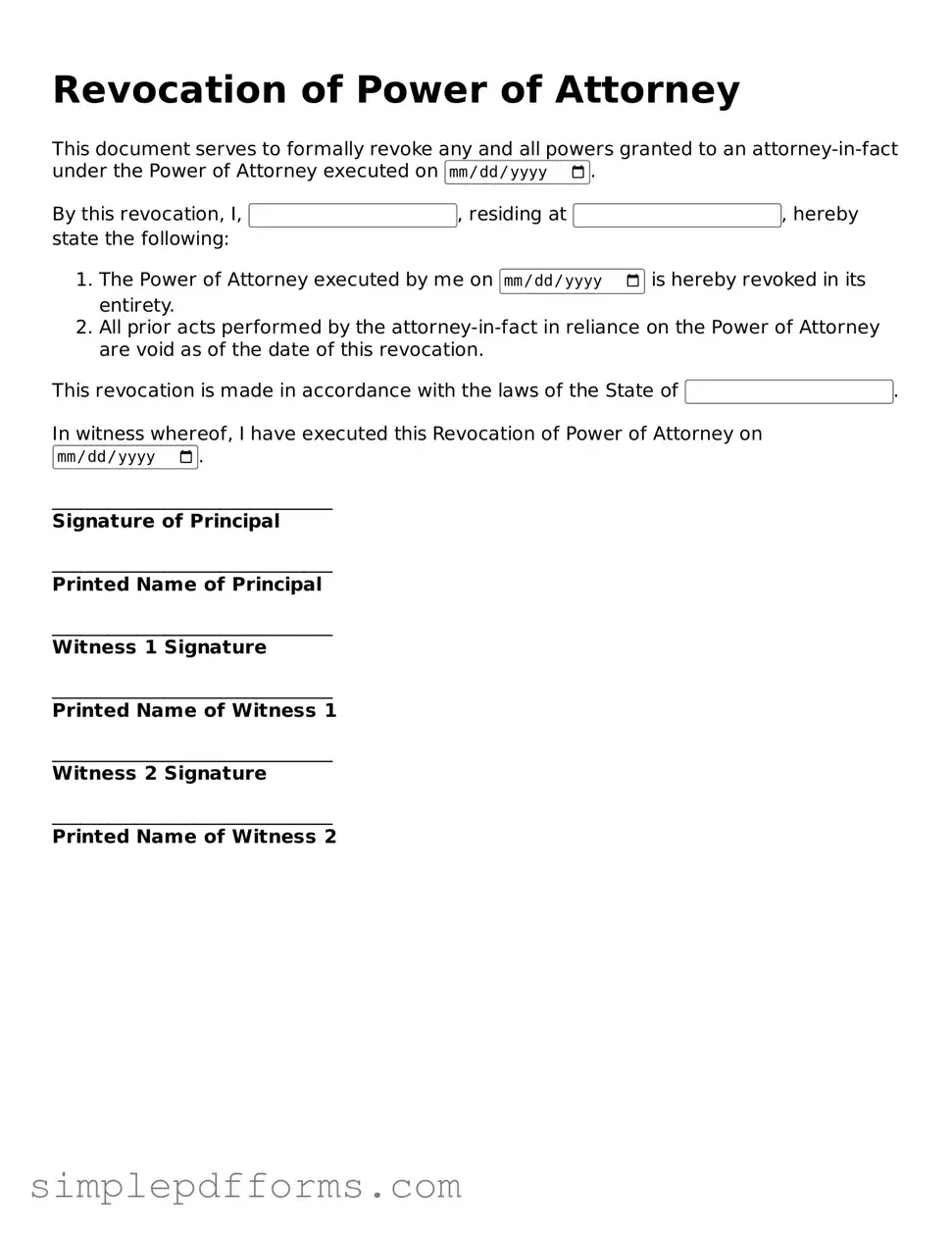Free Revocation of Power of Attorney Form
A Revocation of Power of Attorney form is a legal document that formally cancels a previously granted power of attorney. This form is essential for individuals who wish to terminate the authority they have given to another person to act on their behalf. Understanding how to properly complete and file this form can help ensure that your wishes are respected and that your affairs are managed according to your current preferences.
Open Revocation of Power of Attorney Editor Now
